Learning and Burning

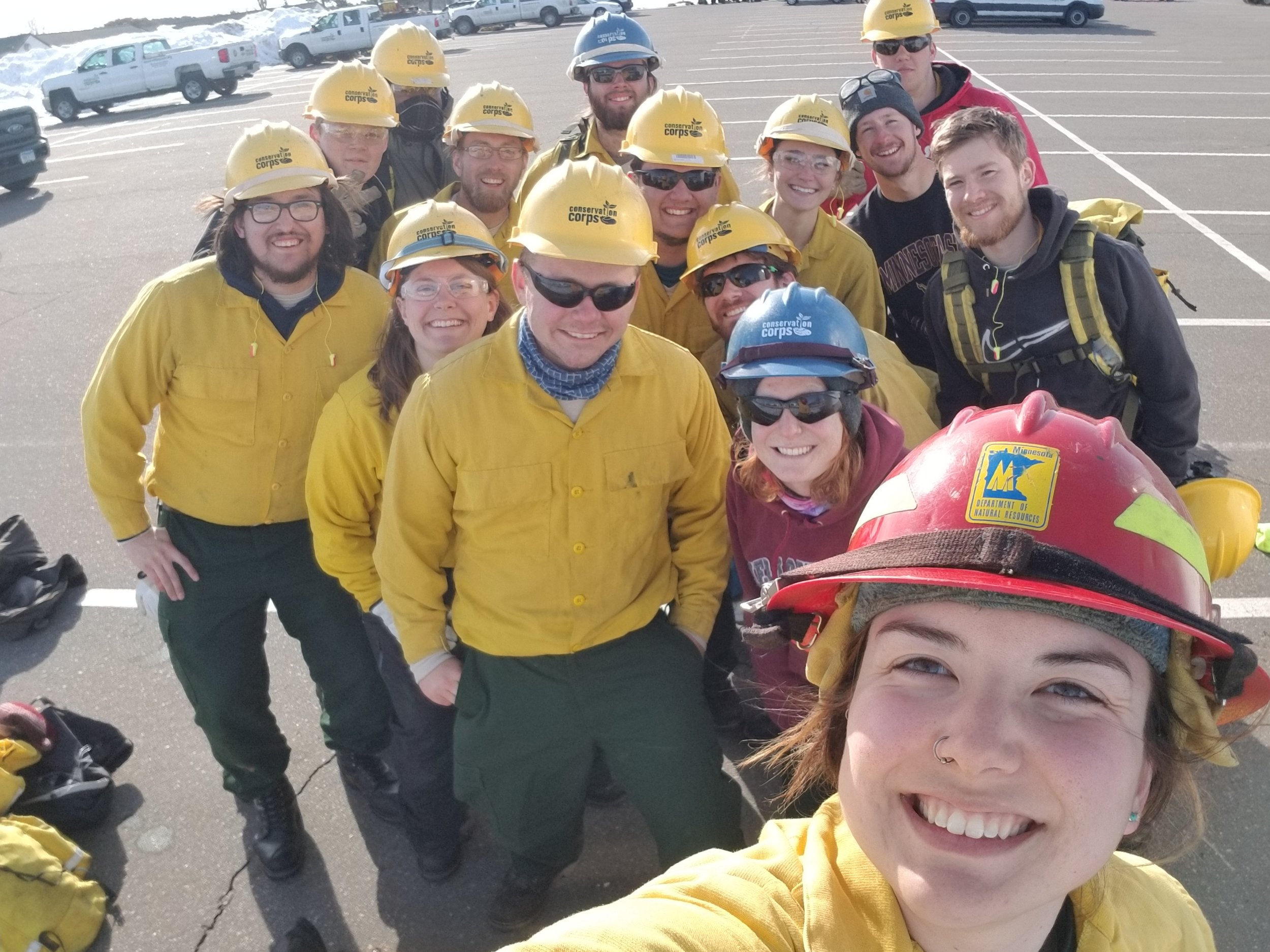
Each year around this time, Conservation Corps trains about 100 new Wildland Firefighters. Crews come together at Camp Ripley for an intense week of training including; classroom lectures, hands-on skills training and a work capacity test. Once complete, members earn an S-130/S-190/L-180 certificate from the Minnesota Department of Natural Resources as a Firefighter Type 2. So what exactly does that mean?
AmeriCorps members spend four days in the classroom learning essentials such as; firefighter preparedness, fuel types, topographic influences, watch out situations, fire weather & behavior, cultural components of wildfire, wildland urban interface, and tools and equipment. They also get hands-on practice with fire shelter deployments, map and compass, radio communications, hand tools, pumps, hoses, Type 6 engines, firing devices, mop-up, gridding and line construction. The MN DNR is responsible for leading the trainings, however, members who have gone through the training before were able to assist in advanced leadership roles during the week.
Another component of training is the work capacity test where members must walk for 3 miles carrying a 45 pound pack in 45 minutes or less. If they are able to complete this pack test, then they receive their Red Card, which is an interagency certification that demonstrates a person is qualified to do the required job when arriving on an incident. 89 members completed the pack test this year!
After the training, everyone is qualified to work on prescribed fire or wildfires. Crews from all over the state will participate in on-call rotation status for wildfire incidents in Minnesota. Four crews each week stand by as reserve crews in case the DNR is in need of assistance during a wildfire. Some of our crews in the Northwest and Northeast District even get to do staffing with DNR Forestry, working side by side with DNR personnel on engines.
“A big thank you goes to DNR staff for dedicating their time and efforts to produce such a valuable training,” said NW District Manager Anja Hogan. “This is not just a job for them. They are actively mentoring, providing good leadership and being a positive influence on our AmeriCorps members.”
At the end of the week, the DNR answered questions about careers in Wildland Firefighting. Even though not everyone will go into firefighting, the leadership skills, situational awareness and grit they learn during this week will apply throughout their entire life.



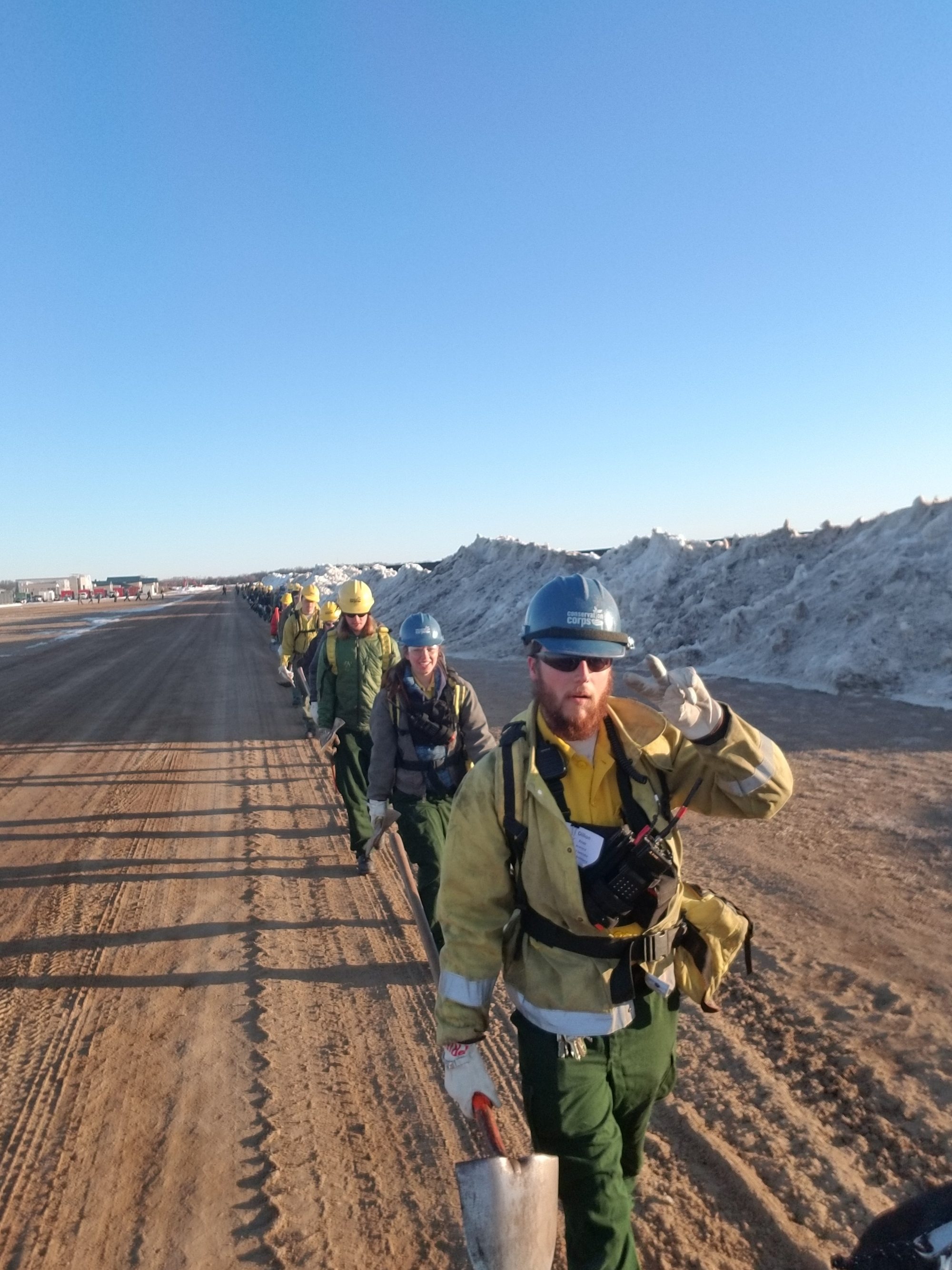
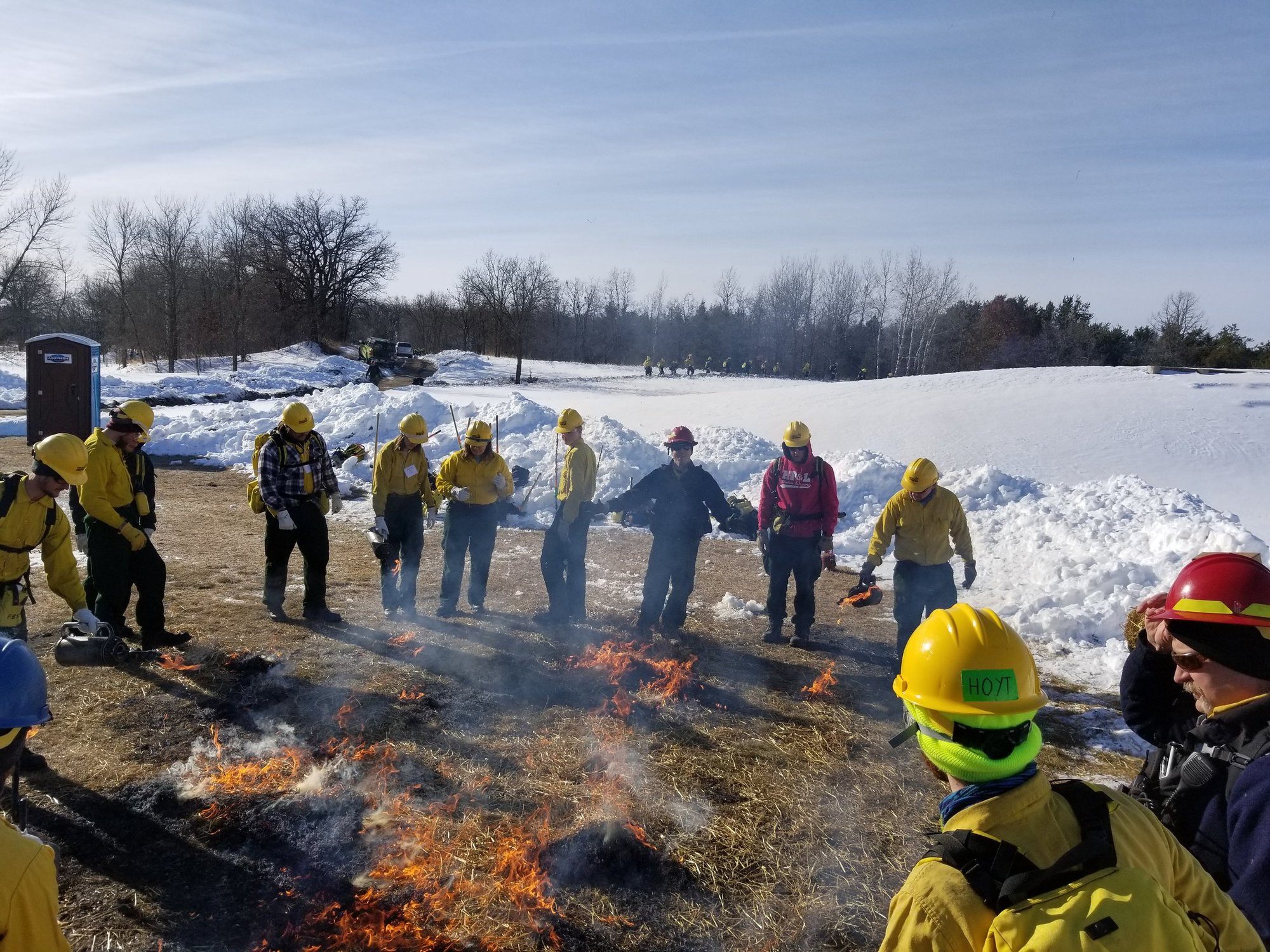

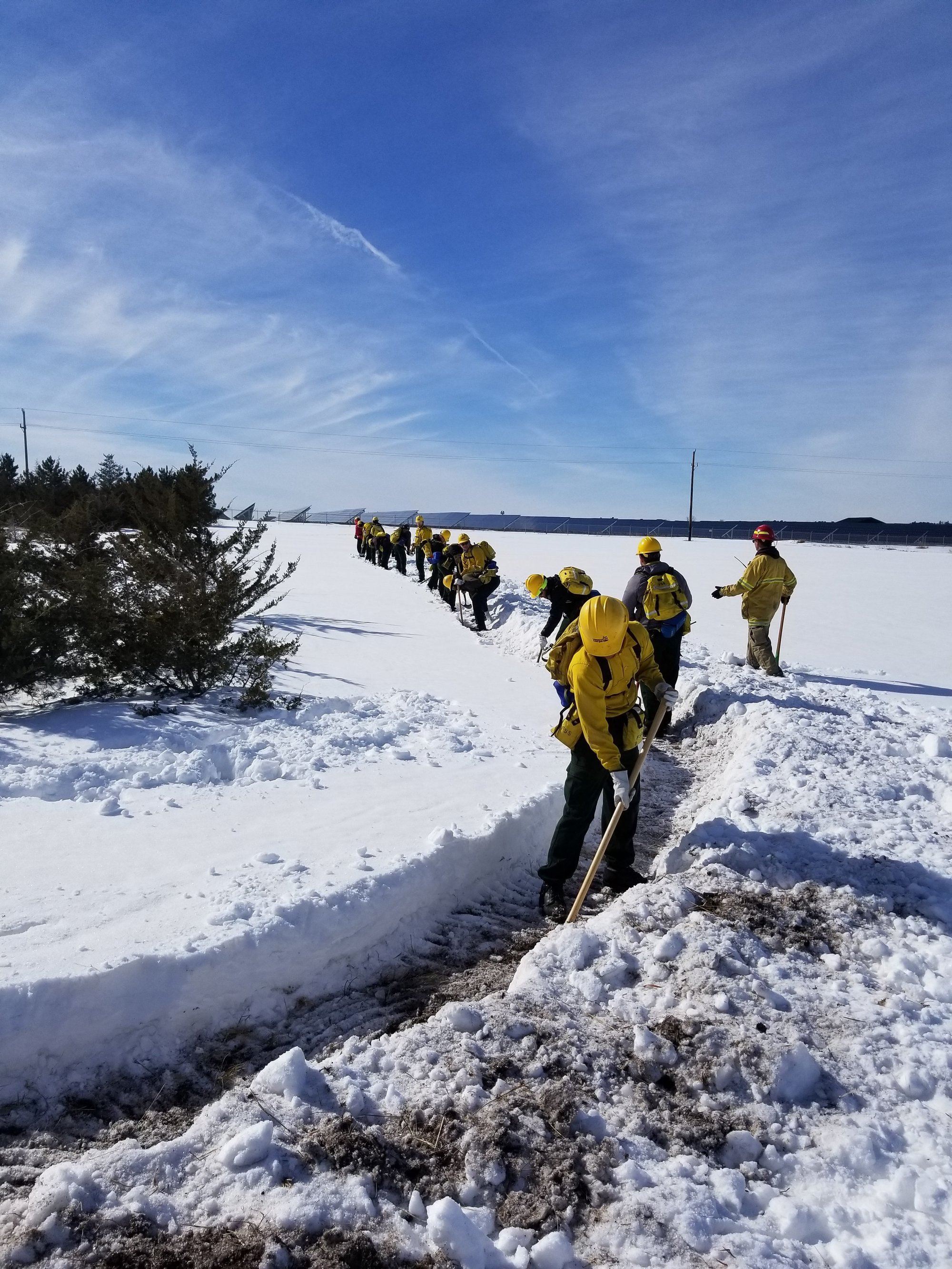

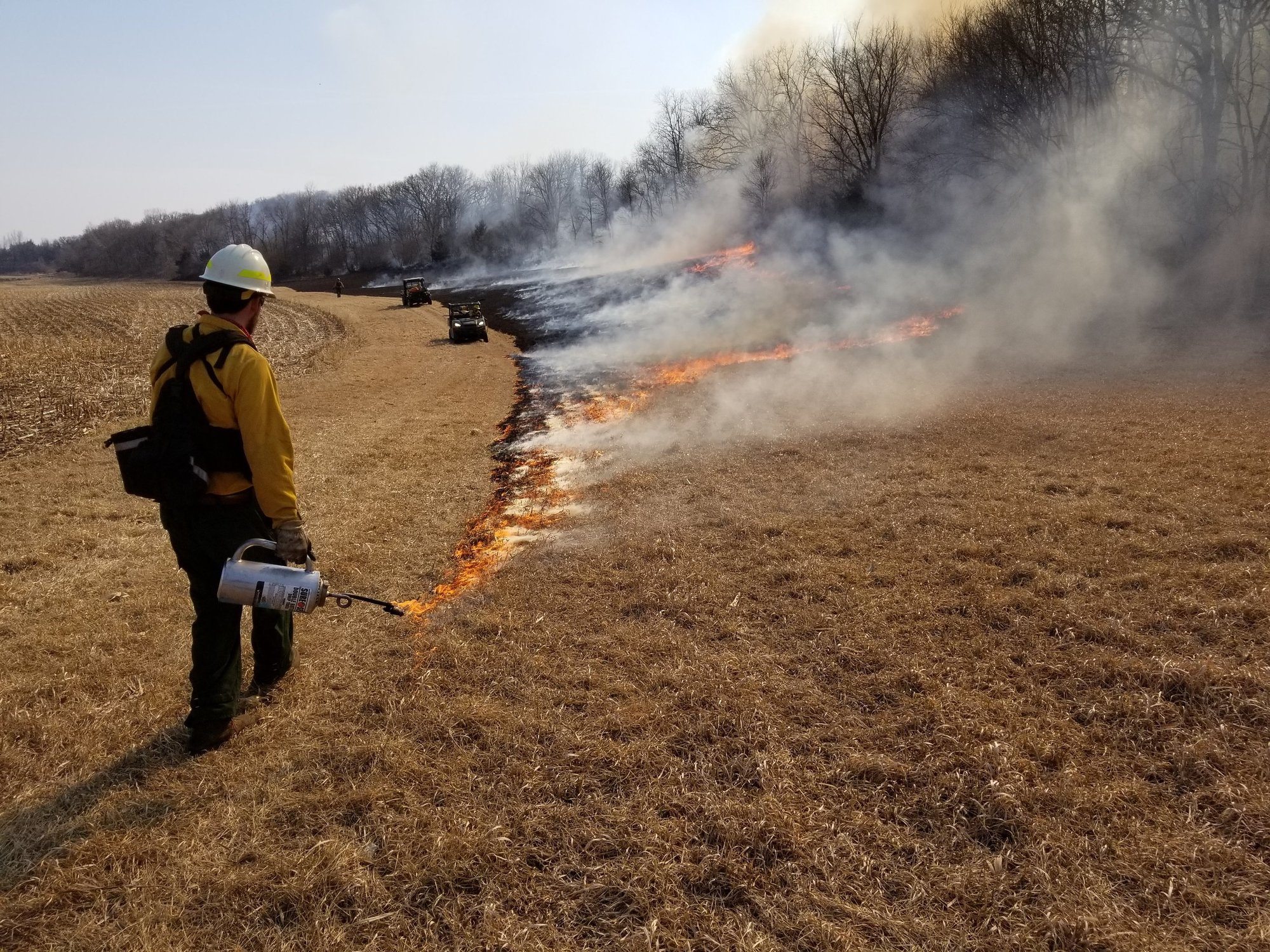

Our Loess Hills crew didn’t waste any time before getting in the field after fire training. March 19-23, the six-person crew participated in the Loess Hills Cooperative Burn Week which included over 65 people from 20 different units made up of the Iowa Department of Natural Resources, County Conservation Boards, Iowa Natural Heritage Foundation, The Nature Conservancy, Doane College and Conservation Corps Minnesota & Iowa.
The burn week serves multiple purposes. The top priority is creating leadership and learning opportunities for new and experienced firefighters alike. This year, an S-211 portable pumps course was offered for free as part of the burn week. It is also an opportunity for firefighters in training to initiate task books and have tasks signed off on. Evaluators and mentors are made available for Squad Bosses, Burn Bosses and Fallers. Finally, it’s a chance for large, complex units to be burned to aid the recovery and sustainability of prairie remnant and woodlands in Loess Hills.
In addition to the training opportunities and chances for different agencies to work with one another, a total of 12 units were burned throughout the week totaling 1,243.7 acres.
“Even though the weather didn’t turn out as we had had hoped, we got to spend our week working with firefighters from a multitude of organizations and experience levels. It was a great opportunity for the crew to meet and collaborate with project partners throughout the hills and gain valuable experience with prescribed fires. Working in the field gave us the ability to build on our classroom training by using the tools of the trade and watching fire behavior in different fuels under different weather conditions. Crew members were able to serve in a variety of roles and gain confidence in our skills – we started the week eager to learn and ended it with smiling, sweaty, sooty faces.” – Inga, Loess Hills Crew Leader